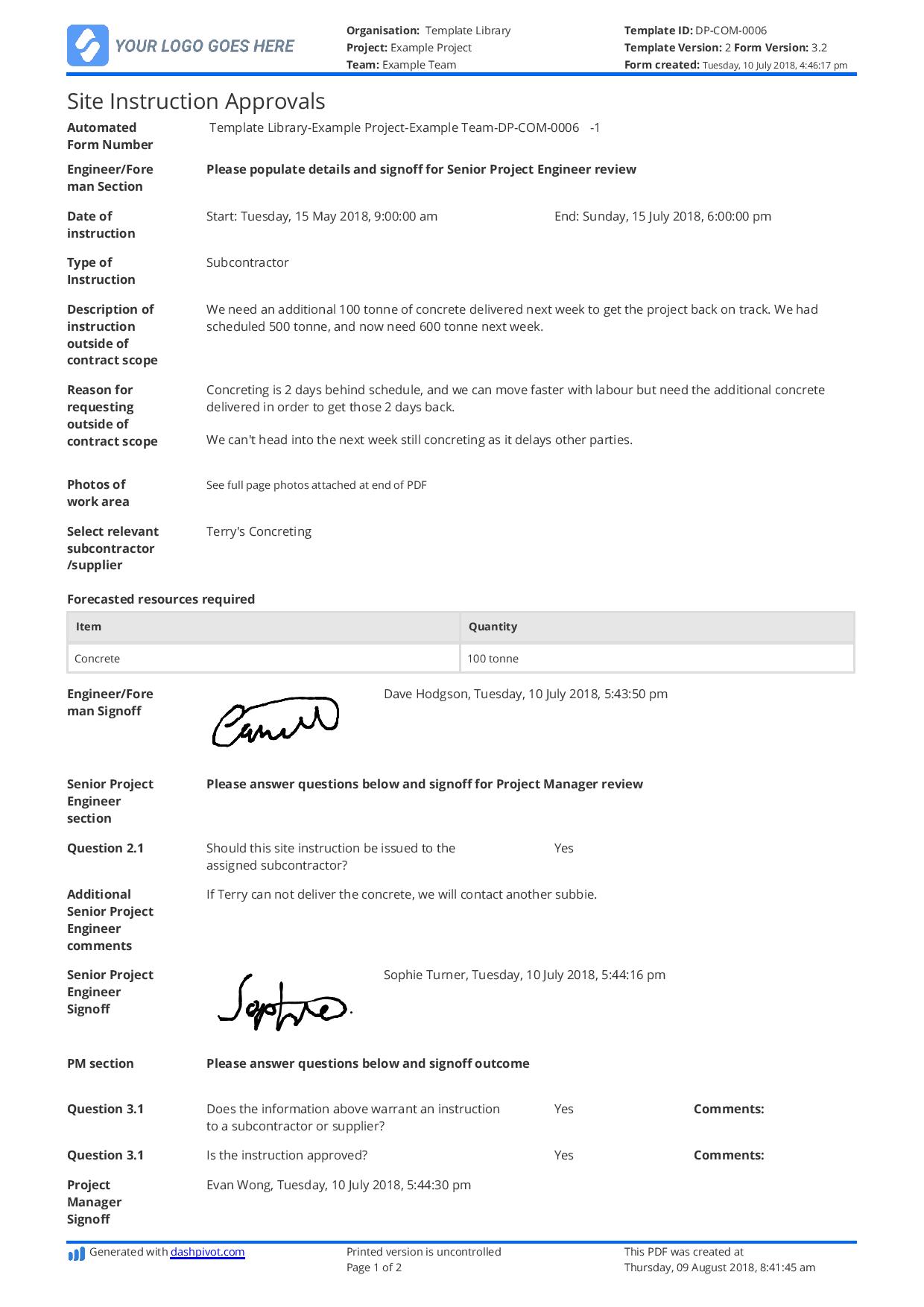Commercial – Site instructions

Site instructions: Here's the correct format for your book
What are site instructions? And when are they used?
A site instruction is a formal instruction typically issued by the head or lead contractor with instructions and directives to other contractors or subcontractors. These instructions must be written and formalised because they fall outside the original project scope or plan - and hence require additional 'instruction'.
Site instructions can be delegated to the contractor or subcontractior for the execution of particular works, the purchase of new or additional goods, the testing of materials and design or defect issues which need rectification.
Contractors obviously prefer not to issue site instructions, as they either:
- Point to a problem or defect associated with the initial construction or works which could have been done right the first time
- Point to a delay or holdup with an element of the project which needs to be adjusted through additional supplier, ordering etc.
- Fall outside the original scope of the contract and work, which isn't ideal for any parties - who plan and schedule their people and assets based on that original plan (with some wriggle room)
A perfect project would result in no variations or site instructions, but as we know, that is rare/almost impossible.
Why do site instructions matter?
Site instruction are very important for projects and companies in the industries.
Logistically, they are important to moving projects forward. A contractor who is largely responsible for the safe delivery of the asset must have a mechanism for pushing adjustments down through the chain of command. If a subcontractor is falling behind on schedule or the client requests a change from the original plan, the contractor needs to have a formal method for ensuring that other contractors and subcontractor are informed and compensated for this change - and execute the new instruction properly.
Because site instructions often fall outside the original scope of the contract, they aren't necessarily 'covered' by the contract.
If site instructions aren't or weren't issued, contractors and subcontractors alike can fall into a grey area of work where claims and disputes arise because of the ambiguity of the work required, who's fault it is/was, and how much people need to be payed or compensated.
The additional instruction, which contains directives as to the type and scope of additional work necessary ensures that the work is covered what is essentially a 'supplemental' contract.
Getting your site instruction format and documents right
Getting the format of your site instructions is important. Site instruction carry weight and importance, and can be important for legal and financial matters.
In order to protect yourself against unfair claims and disputes, it's important to keep a thorough and standardised site instruction template which you can issue every time.
The site instruction example you see below was issued to a subcontractor. Due to the speed and changing nature of works, the concrete supplier needed to deliver an additional 100 tonne of concrete to site. The contractor issued this site instruction so that the amount of concrete kept up with other works - and didn't delay the project.

Use this site instruction example template for free now.
What needs to be in your site instruction book?
Keeping a tight and standardised site instruction format is important for record keeping, disputes and professionalism. Your site instruction format may vary slightly from the example above depending on the type of works you do and type of instruction issued, but the bones of the site instruction will remain largely the same.
In your site instructions, you will want to cover some basic logistical information which serve as evidence and organisational markers such as:
- A form number for that particular site instruction
- The date of the instruction
- The type of instruction (contractor, subcontractor etc.)
Outside of these obviously important details, your site instruction needs to contain the necessary detail for your records - and so that the site instruction receiver can understand what is required of them. These additional details include:
- A description of the instruction outside of contract scope
- The reason for requesting works outside of the contract scope
- Photos of the work area (defects etc.) which are critical to providing proof later on down the line
- Name the relevant subcontractor or supplier being issued the site instruction
- Label and document the forecasted resources required
- Final checklist questions around whether or not an official site instruction is warranted and required
- Engineer/foreman and senior project engineer signoff for the actual issuing of the instruction
Creating and sharing site instruction which follow this format will help to make the approval process and strength of your records more streamlined and solid.
Documentation is extremely important in the industries, because it's what all contractors and subcontractors fall back on at the end of the day.

Site Instruction template
Manage site instructions & approvals more easily. See the template →